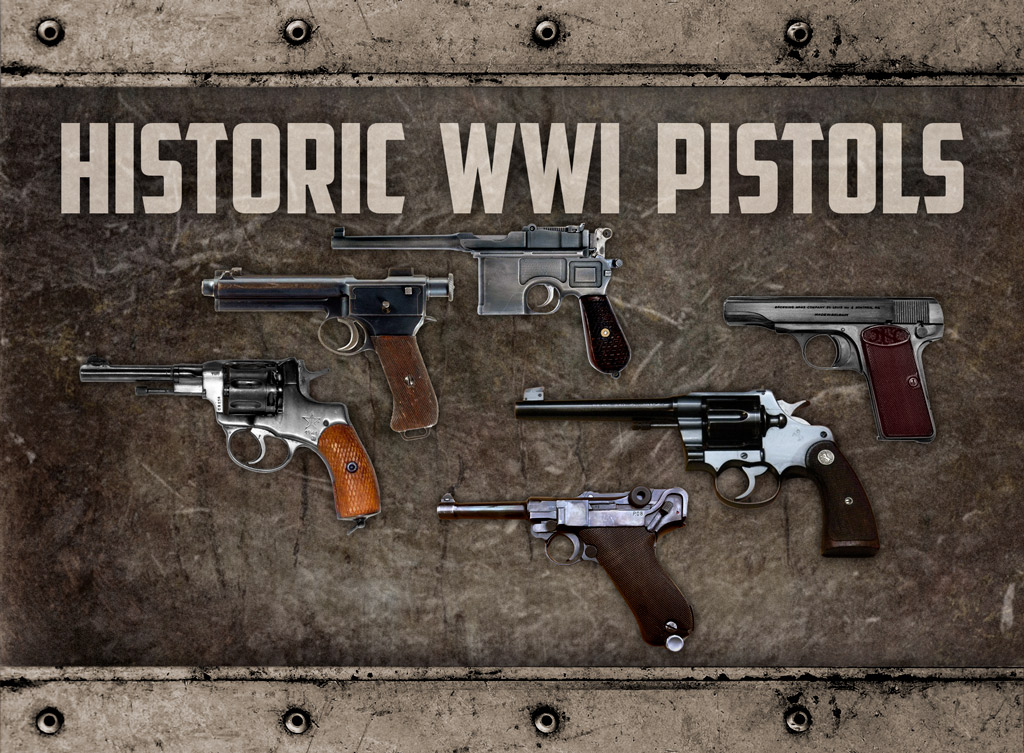
Originally designed as a weapon to be used by cavalry, the pistol became the principal weapon for an assortment of personnel during World War One. While standard issue to officers on both sides of the war, militaries around the world issued the pistol to tank crews, military police, and airmen.
Pistols were the only weapons that were practical in tight spaces. The confined environments of both armored vehicles and aircraft made the use of rifles all but impossible for tank operators and airmen.
When the war started in 1914, three types of pistols were in use: revolvers, clip-loaded automatics, and the blowback models in which a propellant gas force the bolt back after firing, causing the gun to reload.
Historically, armies typically manufactured their own standard issue pistols using contractors. However, material and manufacturing shortages dictated militaries would have to put other models to use on the battlefield.
Here are just some of those pistols that filled a need during the Great War:
Colt Model 1917 (New Service)
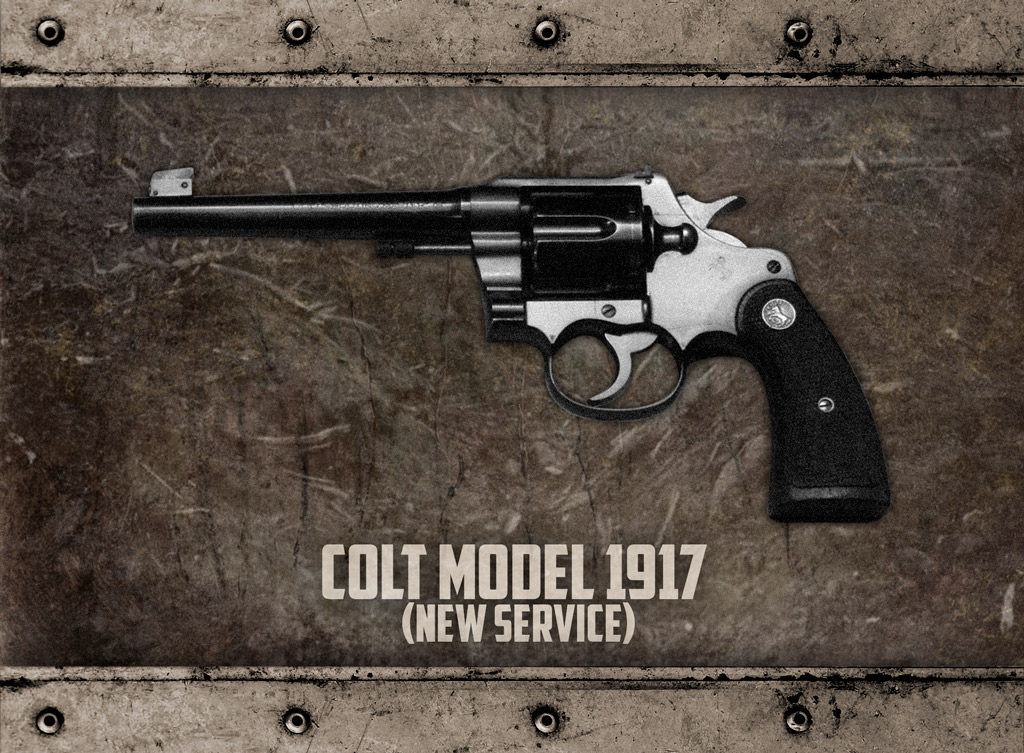
Colt created the M1917 revolver to supplement the low supply of M1911 pistols during World War I.
The American Army lacked quite a bit in the area of fighting equipment, including small arms when it entered World War 1 in 1917. As a result, the U.S. Army commissioned two arms manufacturers—Colt and Smith & Wesson–to produce a six-shot revolver, designated the M1917, that would use a .45 ACP cartridge.
Some years earlier, Colt introduced their “New Service Model” revolver. It fired .45 Long Colt cartridges. The Army eventually accepted the into service as the M1909. Colt used this gun and bored its cylinders to accommodate .45 ACP cartridges to meet the needs of the Army.
The M1917 barrel measured 5.5 inches while its overall length was 10.8 inches. The trigger ring was combined into the receiver. It included double-action trigger assembly and a rear notch sight. The total weight of the revolver was 2.5 pounds with a muzzle velocity of 760 feet-per-second.
Luger P08
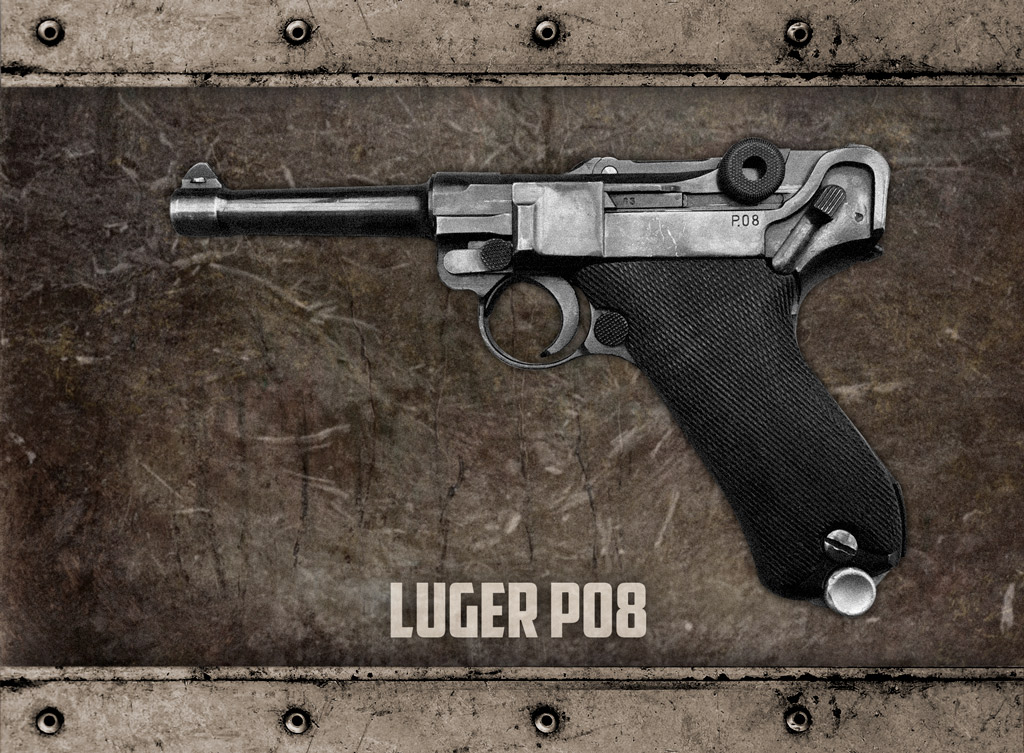
The full German name of the P08 model is, “Parabellum Pistole Modell Von 1908.”
Without a doubt, the German Luger was the most famous wartime pistol. While it became iconic in World War 2, the origin of the Luger dates back to before World War 1 when Hugo Borchardt designed them. Later, Georg Luger enhanced the design and the “Luger” designation took hold.
Also referred to as the P08, the Luger was initially chambered to fire 7.65mm rounds. However, by 1908 the pistol was chambered for the better known 9 x19mm Parabellum cartridge. It had an 8-round detachable magazine. The Luger weighs in at about 2 pounds with a muzzle velocity of 1300 feet-per-second.
The Luger P08 enjoyed a reputation for reliability, even with a relatively complicated locking device. That complication made it difficult for factories to produce in mass quantities that the world needed during war time. But, a variety of companies manufactured the P08 up until 1942 when the Walther P38 replaced it.
Nagant Model 1895
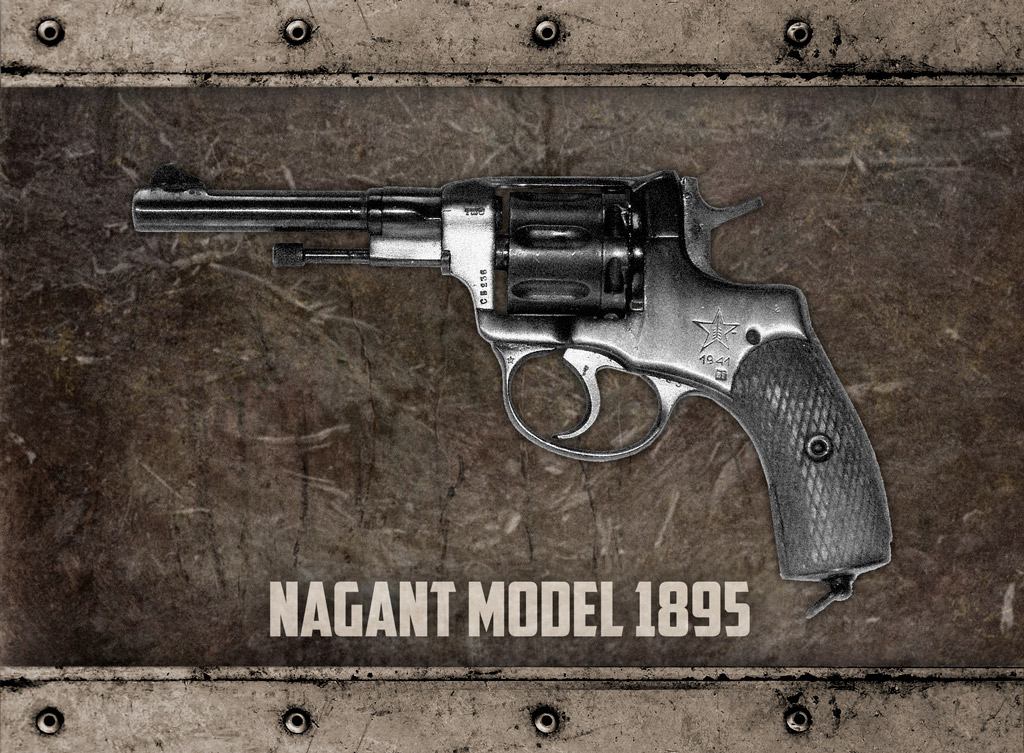
The unique “gas-seal” system allows you to fire the M1895 revolver suppressed.
Always short of revolvers during the war, Russian officers were often forced to make do with whatever they could find. Officially, however, the Imperial Russian Army designated the Belgian-designed Nagant Model 1895 its standard sidearm. The seven-shot service revolver came on the scene in 1894 when Leon Nagant earned a patent.
The M1895 had many of the design features of revolvers in other countries:
- a solid metal frame that contained the working parts
- revolving cylinder with support above and below
- exposed hammer within easy reach of the thumb
- curved trigger and elongated trigger guard
- forward iron sight paired with a rear notch assembly
Its unique feature was its ability to seal during firing to get the most energy from its propellant gasses. For this to happen, the revolving cylinder moved slightly forward after you cocked the weapon. A complete seal was attained between the firing chamber and base of the barrel assembly. The Nagant M1895 was also uniquely chambered for a proprietary cartridge, the 7.62x38mmR.
Russia made the M1895 standard issue during World War 1. Soldiers continued to use it during the Russian Revolution of 1917 and throughout World War 2.
World War I Pistols: Browning Model 1910
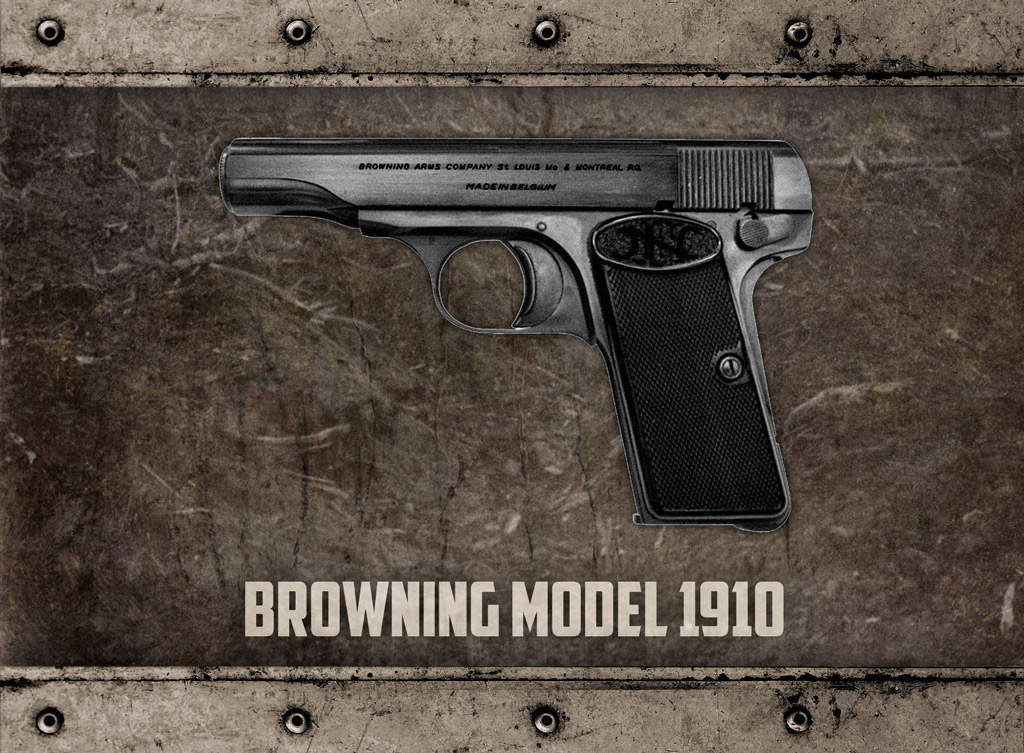
Many historians believe the assassination of Austrian Archduke Franz Ferdinand with a Browning Model 1910 started the first world war.
The Model 1910 was another of master gunsmith John Browning’s firearms that proved to be a success during both world wars. Produced in Belgium, the Serbian National Army first purchased the semi-automatic pistols in 1913. The militaries of Belgium, the Netherlands, Finland, France, and Japan would also use the Model 1910.
The pistol gained an infamous reputation when Serbian Gavrilo Princip used the gun to assassinate Austrian Archduke Franz Ferdinand in 1914. Many historians believe the incident triggered World War 1. Later, a Russian poet used the model to kill French president Paul Doumer in 1932. Louisiana governor Huey Long was also gunned down with the same model pistol in 1935.
Browning offered the Model 1910, with a blowback system of operation in both a 9x17mm Browning cartridge and a 7.65x17mm Browning Short. Depending on the caliber, you’d get either a 6-round or 7-round detachable box magazine.
Mauser C96
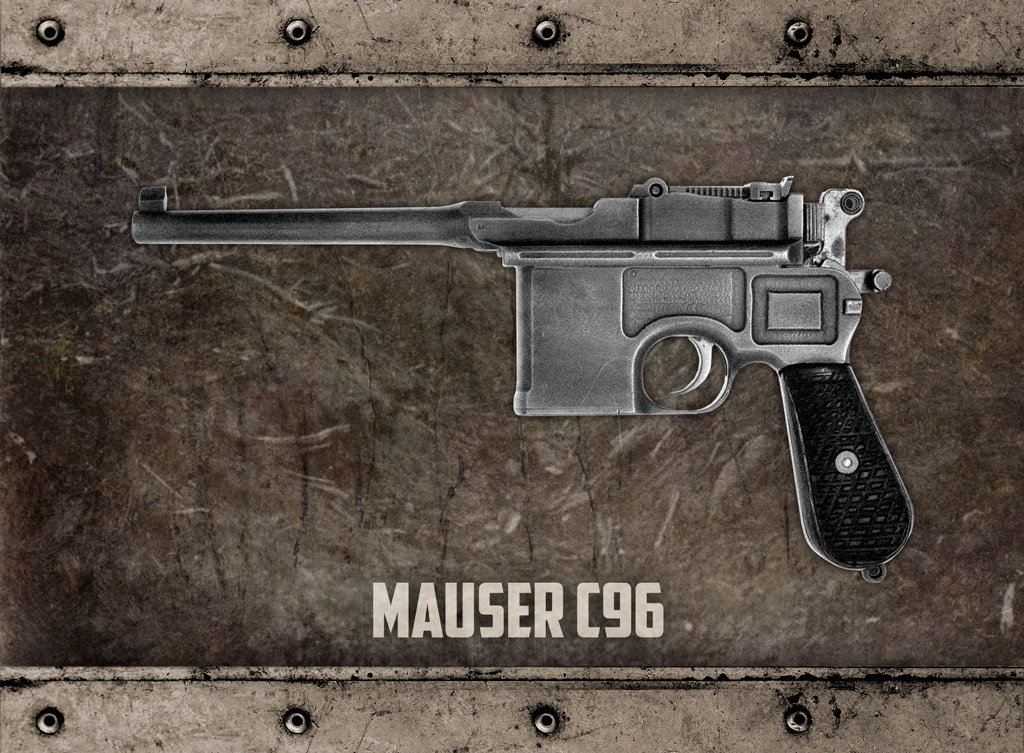
The unique grip of the Mauser C96 earned the gun the nickname “broom handle.”
The Mauser C96 is one of the most identifiable semi-automatic pistols of World War 1. Designed in 1894 and put into production two years later, the C96 began its long life using a 7.63x25mm Mauser cartridge. As wartime production ramped up in 1914, Germany looked to the C96 to help make up for its small arms shortages.
Since the 9x19mm Parabellum cartridge was still the dominant pistol round in the German Army, the military ordered the C96 to be produced in a 9mm form in 1915. Once the military approved and tested the change, Mauser received an initial order of 150,000 pistols.
The C96 has a distinctive industrial look. Its front-loading magazine, thin barrel assembly, and broom handle pistol grip—added to its popularity during two world wars and other smaller conflicts.
Roth-Steyr Model 1907
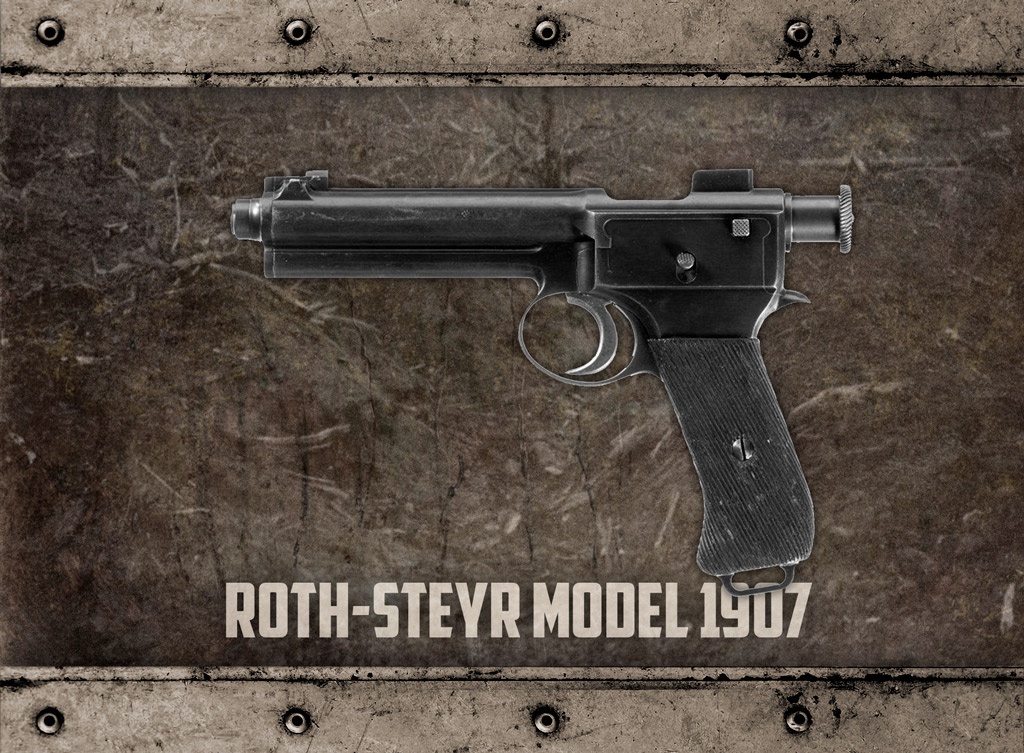
The Roth-Steyr Model 1907 uses the unusual 8mm Roth-Steyr cartridge.
The Roth-Steyr M1907 was a semi-automatic pistol the Austro-Hungarian Army carried in World War 1. It’s believed to be the first self-loading pistol a major army adopted. Plants in Steyr, Austria, and Budapest, Hungary manufactured the sidearm.
The M1907 used the 8×18.5 Roth M7 cartridge. Why have you never heard of it? It’s a caliber that was unique to the 1907. No other weapons utilized it. The pistol had a barrel that rotated 90 degrees during firing. With the bolt surrounding the barrel, they could both move to the rear when the shooter fired the gun. During this process, the pistol ejected the spent shell casing, and a new cartridge inserted.
The Model 1907 frame held a built-in magazine in its pistol grip. Allowing the operator to load a 10-round “charger” through the open action.
Pistols Of World War I: Ancient Technology?
When it comes to naming the most lethal weapons of the Great War, artillery, chemical gas, machine guns, rifles, mortars, and tanks get most of the press. Historians don’t often mention World War I pistols as having played a significant role in the conflict. But when soldiers in the trenches were ordered to attack, they often went over the top with nothing more than a trusted pistol to capture an enemy position. Fighting in close quarters is not about the newest technology in weaponry. Instead, it often comes down to courage and a reliable sidearm.

